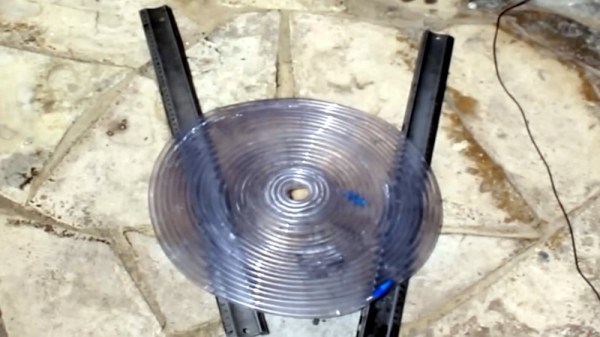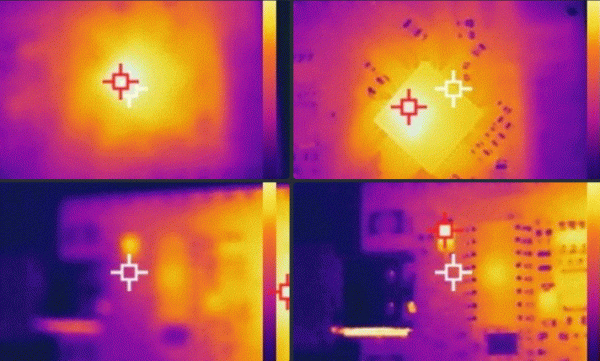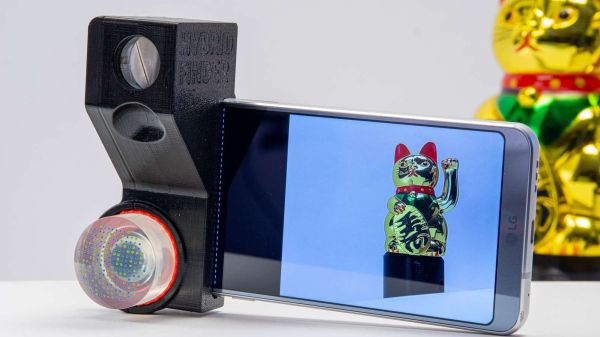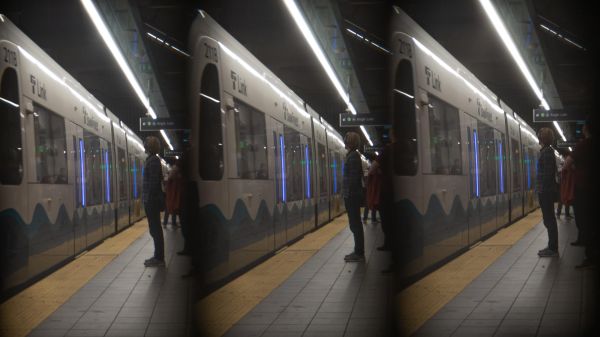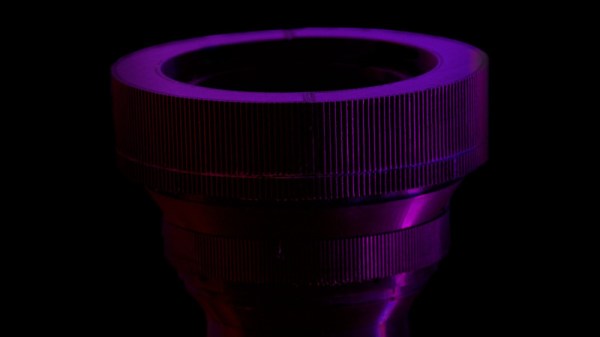Making a traditional glass lens requires a lot of experience, skill, and patience grinding a piece of glass to the required shape, and is not for the casual experimenter. Making a glass Fresnel lens with its concentric rings requires even more work, but as the ever-resourceful [Robert Murray-Smith] shows us, a Fresnel lens can be made from far more mundane materials. He shows us a working lens made from transparent plastic tube, and even successfully smoulders a piece of paper with it under the anaemic British sun.
His lens, with its circular profile tube filled with water, is not perhaps the most efficient lens in terms of light focused per unit area of lens. From dredging up our highschool physics lessons we are guessing that half the light is diffracted outwards rather than inwards by the cylindrical profile of the coil, but for the cost of the whole device we’re not sure that matters. Next time we’re shipwrecked on a desolate island with a handy supply of clear plastic tube and fresh water, we know we can always raise a fire.
If Fresnel lenses interest you, we’ve taken a look in the past at their history.

